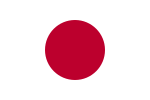1970s in Japan
You can help expand this article with text translated from the corresponding article in Japanese. (May 2024) Click [show] for important translation instructions.
|

| This article is part of the series |
| Decades in Japan |
|---|
 |
In Japan during the 1970s, the economy was hit by the oil shock and the Nixon shock. Energy consumption dropped and industrial production increased. During the 1970s energy crisis, Japan introduced energy-saving measures and became a hub of miniaturization.[1] The women's liberation movement in Japan, known as ũman ribu, began to gain momentum with feminist groups starting to form in 1970.[2][3]
In November 1973, a tissue shortage in Japan was reported by news agencies.[4]
Culture
[edit]Music
[edit]During the 1970s, Japan had the second largest music market in the world.[5] 1970s Japanese music included kayōkyoku, idols, new music, rock and enka. Musical artists in the 1970s included, in particular, Momoe Yamaguchi, Saori Minami, the Candies, Pink Lady, Hiromi Go, Hideki Saijo, Yuming, Saki Kubota, Judy Ongg and Sachiko Kobayashi. The Best Ten began in 1978.
References
[edit]- ^ "JAPAN BECOMES AN ECONOMIC POWERHOUSE IN THE 1970s AND 80s | Facts and Details".
- ^ Shigematsu, Setsu (2012). Scream From the Shadows: The Women's Liberation Movement in Japan (PDF). Minneapolis: University of Minnesota Press. p. 3. ISBN 9780816667581. Archived (PDF) from the original on 2018-04-27. Retrieved 2018-05-07.
- ^ Shigematsu, Setsu (2015). "The Women's Liberation Movement and Sexuality in Japan". In McLelland, Mark; Mackie, Vera (eds.). Routledge Handbook of Sexuality Studies in East Asia. London: Routledge. p. 175. ISBN 9781317685746.
- ^ "The Great Toilet Paper Scare of 1973".
- ^ Billboard. 19 December 1970, pp 12 & 52. 22 December 1979, p 14.
